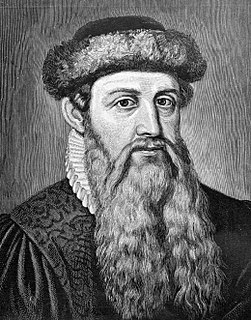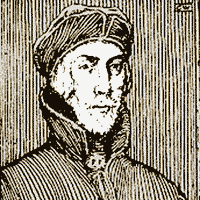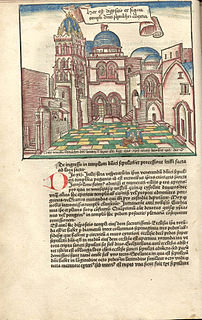Sources
- Allgemeine Deutsche Biographie - online version at Wikisource
Adam d'Ambergau was a German compositor (one who sets words into type for printing) who lived at the end of the 15th century.
Adam d'Ambergau was probably born in Ammergau, Upper Bavaria. Neither his place of birth, nor his residence have been precisely recorded and can only be reconstructed from his prints. There exists a print of the Virgil signed Adam, Venice 1471, and an edition of Cicero's talks signed Adam d'Ambergau, Venice 1472. However the types in both prints are different, therefore it may be possible that two compositors of the name of Adam have lived in Venice at the same time.
The name Adam is found repeatedly in the following years: A Magister Adamus publishes in 1470 Augustini Dati elegantiae in 4°. Also known are other printers using the names Petrus Adamus Mantuanus, Adam Rost (Rome, 1471-1475) and Adam de Rotwil (Aquila, 1482). The common use to only use the first name, sometimes with an added place of birth in Latin, makes it difficult to ascertain the identity of the printers of this time.

Johannes Gensfleisch zur Laden zum Gutenberg was a German inventor, printer, publisher, and goldsmith who introduced printing to Europe with his mechanical movable-type printing press. His work started the Printing Revolution in Europe and is regarded as a milestone of the second millennium, ushering in the modern period of human history. It played a key role in the development of the Renaissance, Reformation, Age of Enlightenment, and Scientific Revolution, as well as laying the material basis for the modern knowledge-based economy and the spread of learning to the masses.

Aldus Pius Manutius was an Italian humanist, scholar, educator, and the founder of the Aldine Press. Manutius devoted the later part of his life to publishing and disseminating rare texts. His interest in and preservation of Greek manuscripts mark him as an innovative publisher of his age dedicated to the editions he produced. His enchiridia, small portable books, revolutionized personal reading and are the predecessor of the modern paperback.

Typesetting is the composition of text by means of arranging physical type or its digital equivalents. Stored letters and other symbols are retrieved and ordered according to a language's orthography for visual display. Typesetting requires one or more fonts. One significant effect of typesetting was that authorship of works could be spotted more easily, making it difficult for copiers who have not gained permission.
Ottaviano Petrucci was an Italian printer. His Harmonice Musices Odhecaton, a collection of chansons printed in 1501, is commonly misidentified as the first book of sheet music printed from movable type. Actually that distinction belongs to the Roman printer Ulrich Han's Missale Romanum of 1476. Nevertheless, Petrucci's later work was extraordinary for the complexity of his white mensural notation and the smallness of his font, and he did in fact print the first book of polyphony using movable type. He also published numerous works by the most highly regarded composers of the Renaissance, including Josquin des Prez and Antoine Brumel.

The Coleco Adam is a home computer and expansion device for the ColecoVision released in 1983 by American toy and video game manufacturer Coleco. It was an attempt to follow on the success of the company's ColecoVision video game console. The Adam was not very successful, partly because of early production problems, and was discontinued in early 1985.

Letterpress printing is a technique of relief printing. Using a printing press, the process allows many copies to be produced by repeated direct impression of an inked, raised surface against sheets or a continuous roll of paper. A worker composes and locks movable type into the "bed" or "chase" of a press, inks it, and presses paper against it to transfer the ink from the type, which creates an impression on the paper.

Nicholas Jenson was a French engraver, pioneer, printer and type designer who carried out most of his work in Venice, Italy. Jenson acted as Master of the French Royal Mint at Tours, and is credited with being the creator of one of the finest early Roman type faces. Nicholas Jenson has been something of an iconic figure among students of early printing since the nineteenth century when the aesthete William Morris praised the beauty and perfection of his roman font. Jenson is an important figure in the early history of printing and a pivotal force in the emergence of Venice as one of the first great centers of the printing press.

The Nuremberg Chronicle is an illustrated encyclopedia consisting of world historical accounts, as well as accounts told through biblical paraphrase. Subjects include human history in relation to the Bible, illustrated mythological creatures, and the histories of important Christian and secular cities from antiquity. Finished in 1493, it was originally written in Latin by Hartmann Schedel, and a German version was translated by Georg Alt. It is one of the best-documented early printed books – an incunabulum – and one of the first to successfully integrate illustrations and text.

Ulrich Zell was an early printer in Cologne, Germany.

In printing and publishing, proofs are the preliminary versions of publications meant for review by authors, editors, and proofreaders, often with extra-wide margins. Galley proofs may be uncut and unbound, or in some cases electronically transmitted. They are created for proofreading and copyediting purposes, but may also be used for promotional and review purposes.
The Victoria Press was a printing press started by Emily Faithfull, along with other feminist activists, in London, on March 26, 1860. The press, named after Queen Victoria, was created as a way to allow more women into the printing field. In 1867 management of the press was given by Faithfull to William Wilfred Head, a partner in the press. Head continued to print pieces advocating for the employment of women until 1882, even after buying Faithfull out in 1869.

Erhard Reuwich was a Dutch artist, as a designer of woodcuts, and a printer, who came from Utrecht but then worked in Mainz. His dates and places of birth and death are unknown, but he was active in the 1480s.
William Jaggard was an Elizabethan and Jacobean printer and publisher, best known for his connection with the texts of William Shakespeare, most notably the First Folio of Shakespeare's plays. Jaggard's shop was "at the sign of the Half-Eagle and Key in Barbican."

Andrea Antico was a music printer, editor, publisher and composer of the Renaissance born in the Republic of Venice, of Istrian birth, active in Rome and in Venice. He was the first printer of sacred music in Rome, and the earliest competitor of Venetian Ottaviano Petrucci, who is regarded as the first significant music printer.

The history of printing starts as early as 3500 BCE, when the proto-Elamite and Sumerian civilizations used cylinder seals to certify documents written in clay. Other early forms include block seals, hammered coinage, pottery imprints, and cloth printing. Initially a method of printing patterns on cloth such as silk, woodblock printing for texts on paper originated in China by the 7th century during the Tang dynasty, leading to the spread of book production and woodblock printing in other parts of Asia such as Korea and Japan. The Chinese Buddhist Diamond Sutra, printed by woodblock on 11 May 868, is the earliest known printed book with a precise publishing date. Movable type was invented by Chinese artisan Bi Sheng in the 11th century during the Song dynasty, but it received limited use compared to woodblock printing. Nevertheless, the technology spread outside China, as the oldest printed book using metal movable type was the Jikji, printed in Korea in 1377 during the Goryeo era.

Anton Koberger was the German goldsmith, printer and publisher who printed and published the Nuremberg Chronicle, a landmark of incunabula, and was a successful bookseller of works from other printers. In 1470 he established the first printing house in Nuremberg. Koberger was the godfather of Albrecht Dürer, whose family lived on the same street.
Peter Short was an English printer based in London in the later Elizabethan era. He printed several first editions and early texts of Shakespeare's works.
The Hebrew incunabula are a group of Jewish religious texts printed in Hebrew in the 15th century.
George Eld was a London printer of the Jacobean era, who produced important works of English Renaissance drama and literature, including key texts by William Shakespeare, Ben Jonson, Christopher Marlowe, and Thomas Middleton.

John Stroble Fass was an American graphic designer and a printer of fine press books. Fass designed books for the leading American publishers of limited edition books. Collectors of private press books also remember John Fass for the handcrafted books he printed on a tabletop printing press in his one-room apartment at the Bronx YMCA. Fass' books and his photography celebrate his life in New York City, where he lived most of his career. His work also documents his passion for the rural landscapes of his native Lancaster County, Pennsylvania.